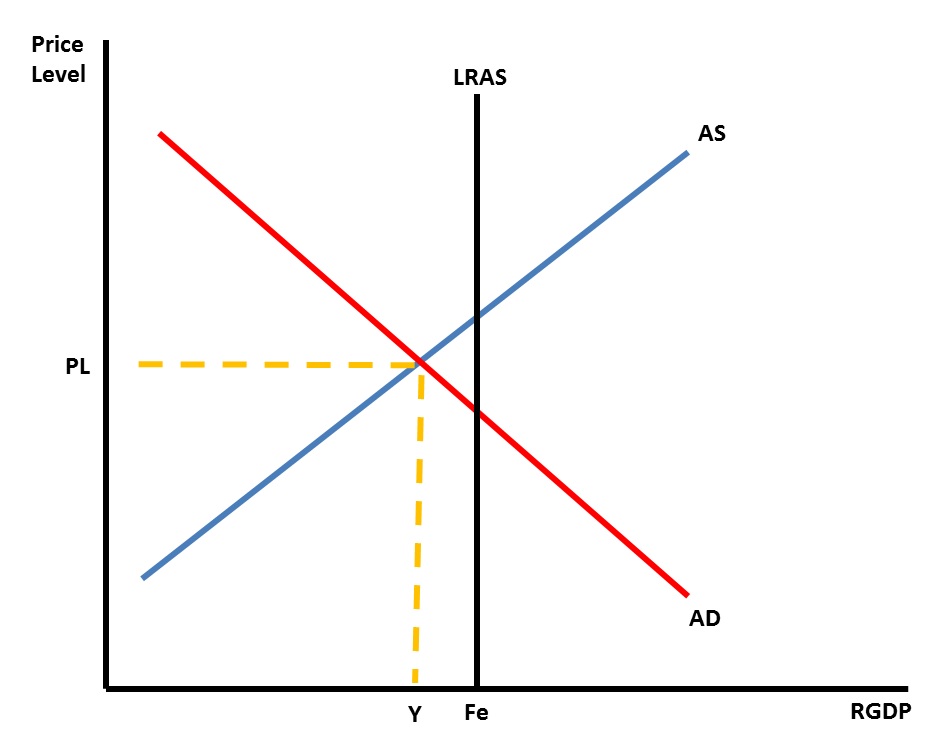
Although long-run aggregate supply curve is relative unresponsive to price change in the short term, there are forces which cause the short-run aggregate supply and short-run aggregate demand curves to move in relation to the LRAS curve. Suppose for example the stock market declines sharply. In that scenario, the average citizen suffers a loss of income and thus is less likely to consume discretionary goods. In that case the AD curve shifts off of the LRAS curve to the left and establishes a new equilibrium point farther down the AS curve. When the price-connector line labeled PL is drawn from the new equilibrium point to the vertical X or price axis, it meets the price line at a point lower on the axis reflecting falling prices. When the quantity connector line is drawn from the RGDP line to the new equilibrium point, it strikes the RGDP line farther to the left reflecting falling output at lower employment and prices. The gap between the LRAS and the new equilibrium point is called a recessionary gap reflective of the decrease in production. The new lower output point is labeled Y on the RGDP line. The Y point means total output or the dollar value of the output.